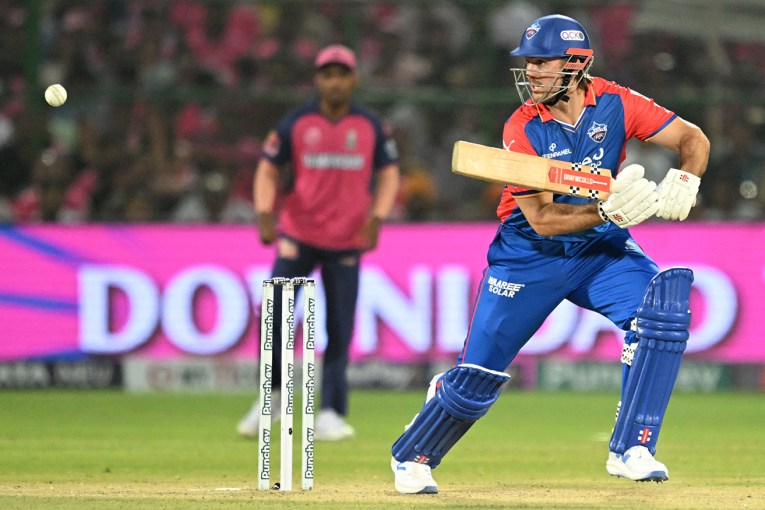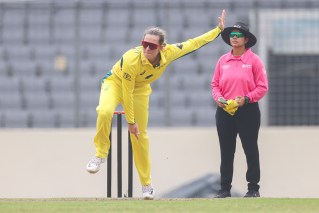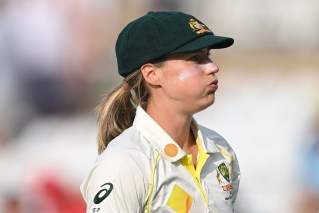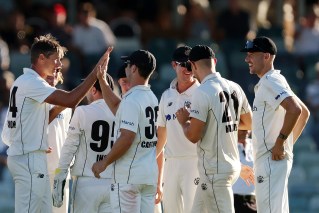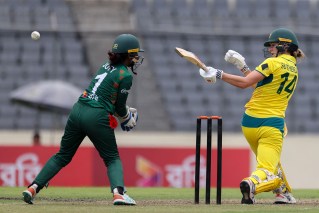What we learned: Adelaide Ashes post-mortem

· Martin Blake: No way back for disintegrating England
The fast bowler is not extinct
Contrary to reports of its demise, fast bowling – really fast bowling, that is – lives.
The 12 month cricket merry-go-round, the proliferation of Twenty20, pragmatic professionalism, stress fractures, cautious coaches and dead wickets might have made speedsters an endangered species, but they have not conspired to kill off all the “quickies”, as Ian Chappell so quaintly calls them.
That is a blessing for Test cricket, for there are few things more viscerally exciting than watching an express pace bowler at the top of his powers.
Let’s hope there were some impressionable Australian kids who turned off the computer for long enough on Saturday to be inspired by Mitchell Johnson.
We are witnessing a train wreck
Make no mistake, we were watching a team unravel. In Adelaide of all places! This wasn’t Perth. A side with England’s supposed class should at least be able to eke out a draw in placid old Adelaide.
Instead, England looked shell-shocked. Petrified, even. That’s not Australian triumphalism, but the word chosen by former England captain Michael Vaughan. The fear factor added a crime-scene frisson to the spectacle. The number of errant hook shots, and the nervous, scatty running between wickets on the fourth evening, was a sure sign of a side that has been discombobulated by Johnson.
Again, here is Vaughan writing in London’s Daily Telegraph: “Some of the England batsmen look scared. They will not admit it but I can see two or three not backing up as keenly to get down the other end as they would facing a medium pacer. They do not want to face Johnson.”
That is some state of affairs for such a well-drilled, professionally prepared and – or so we thought – mentally resilient team featuring world-class batsmen, a quality spinner, a fine all-rounder and the world’s most skilful fast bowler.
But England’s trajectory is in the wrong direction, with the honourable exceptions of Root and the ever-impressive Bell. The acid is on Cook, Pietersen and Anderson in Perth. Not in terms of selection, but in terms of self-respect. Add Broad to that list, strange as it sounds after his performance in Brisbane. Broad is an admirable cricketer, but his effort with the bat in this Test was lamentable. He looked as though he did not want to be out there.
Australia is not that good
Australia’s batting line-up still has more holes in it than Swiss cheese. Other than Clarke and Warner, the batsmen all average in the mid to low 30s, which brings us to…
Last chance saloon for Watson (or at least it should be)
Victory should not be used as camouflage for Australia’s deficiencies. At the top of the list is Shane Watson.
How was it that, in the lead-up to Brisbane, when it was clear that Watson would not be doing much bowling, his place in the batting line-up was beyond debate? Ok. Dumb question. Because there was no one else knocking on the door to bat at No. 3 for their country.
Nevertheless, after 48 Tests, Watson is still averaging only 35. That does not a Test No. 3 make.
When Watson was having lbw problems (again) earlier this year, someone asked Mike Atherton if he needed to spend time on the bowling machine to iron out his technical faults. Atherton replied that it looked as though he had spent too much time on a bowling machine. His shot to get out to Anderson in Adelaide was symptomatic of the heavy-footed, metronomic style that is holding him back from converting starts into big scores.
He should be picked for Perth, where the ball comes on to the bat and he can hit back through the line. He averages 44 at the WACA. But if he fails, and Australia wins the Ashes, a search party should be sent out for a replacement.
We were wrong
As Rodney Hogg observed, most of us had given up on Johnson ages ago. (To be fair to Hogg, he was not among them. This is what he wrote in his first column for The New Daily before the series started: “I expect Johnson to have a standout series and to stick it up both the public, which does not like him, and the Poms, several of whom have already been unsettled by him this summer.”)
This column was, admittedly, among the doubters. It seemed to us that Johnson produced too much sub-standard fare to be worthy of a place in Test cricket. Too often this would relieve the pressure, deflating his own side and allowing the opposition to seize the initiative.
Hats off to all those who showed faith, including the selectors. Hats off, also, to Harris, Siddle and Lyon, who are enabling Clarke to use Johnson as he should always have been used – as a shock trooper who operates in short, lethal spells. (To be fair, this has not always been possible, given the dearth of quality quicks post-McGrath.)
Above all, hats off to Johnson. Such redemption in the face of sustained and repeated public humiliation is not easily won.
We were right
David Warner remains the best chance to become the first genuine world-class batsman in Australian ranks since Michael Clarke. Too many were blinded by the speed with which he scores in coloureds and the boorishness of his conduct to recognise that here is a technically excellent batsman capable of greatness. His average is approaching 40 and rising.
Just when England thought things couldn’t get any worse
Johnson has taken a wicket every 34 balls in WACA Tests at an average of 19.66, 10 runs superior to his career average.
